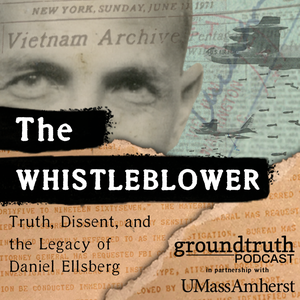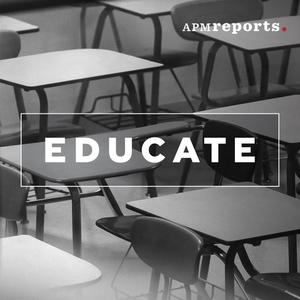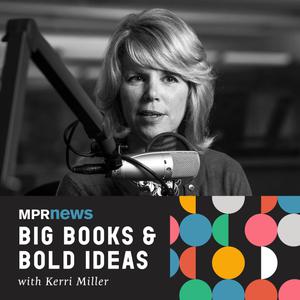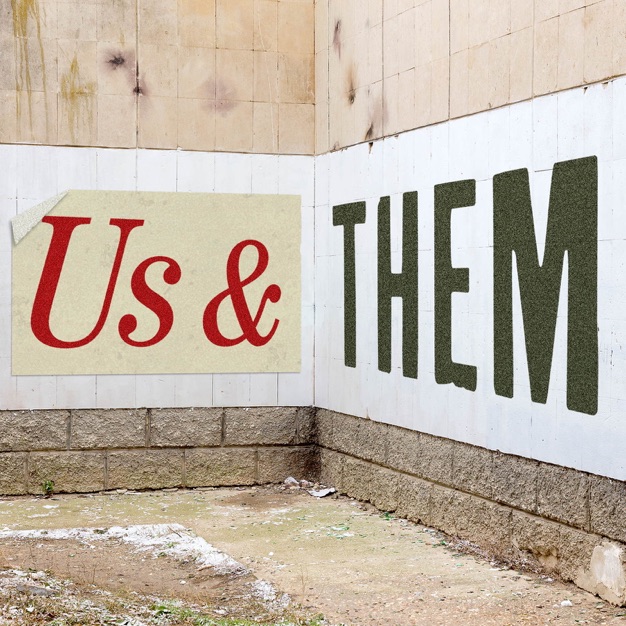
APM Reports Documentaries
APM Reports
The documentary unit of APM Reports (formerly American RadioWorks) has produced more than 140 programs on topics such as health, history, education and justice.
- 34 minutes 4 secondsIntroducing: Sold a Story
Emily Hanford introduces the first episode of her new podcast, Sold a Story.
There's an idea about how children learn to read that's held sway in schools for more than a generation — even though it was proven wrong by cognitive scientists decades ago. Teaching methods based on this idea can make it harder for children to learn how to read. In this podcast, Hanford investigates the influential authors who promote this idea and the company that sells their work. It's an exposé of how educators came to believe in something that isn't true and are now reckoning with the consequences — children harmed, money wasted, an education system upended.
Subscribe: soldastory.org
20 October 2022, 5:05 am - 52 minutes 1 secondNo Excuses: Race and Reckoning at a Chicago Charter School
Producer DJ Cashmere spent seven years teaching Black and brown students at a Noble Street charter high school in Chicago. At the time, Noble followed a popular model called "no excuses." Its schools required strict discipline but promised low-income students a better shot at college. After DJ left the classroom to become a journalist, Noble disavowed its own policies — calling them "assimilationist, patriarchal, white supremacist, and anti-black." In this hour, DJ, who is white, revisits his old school as it tries to reinvent itself as an anti-racist institution. And he seeks out his former students to ask them how they felt about being on the receiving end of all that education reform, and what they think now about the time they spent in his classroom.
9 August 2022, 5:05 am - 50 minutes 20 secondsStanding in Two Worlds: Native American College Diaries
Native American students are just a tiny fraction of all the college students in the United States. They come with different histories, confronting an education system once used to erase their languages and cultures. In this project, three Indigenous college students tell how they are using higher education to strengthen ties to their Native roots and support their people.
2 August 2022, 5:05 am - 51 minutes 22 secondsIn Deep: One City's Year of Climate Chaos
Most scientists believe climate change is increasing the severity of the storms we experience, and how quickly they intensify. After suffering two hurricanes, a winter storm, and devastating flooding in less than a year, Lake Charles, Louisiana, offers a troubling view of the wrenching, disturbingly inequitable effects of climate change.
In Deep: One City’s Year of Climate Chaos offers a rich journalistic portrait of a working-class city and its residents at a perilous moment in our planet’s existence.
3 September 2021, 5:05 am - 51 minutes 3 secondsUnder Pressure: The College Mental Health Crisis
Even before the pandemic, campus counselling services were reporting a marked uptick in the number of students with anxiety, clinical depression and other serious psychiatric problems. What is a college’s responsibility for helping students navigate mental health challenges, and how well are colleges rising to the task?
Read more: Inside the college mental health crisis
19 August 2021, 5:05 am - 52 minutes 29 secondsWho Wants to Be a Teacher?
Many schools around the country are struggling to find enough teachers. Large numbers of teachers quit after a short time on the job, so schools are constantly struggling to replace them. The problem is particularly acute at rural schools and urban schools. The most common level of experience of teachers in the United States now is one year on the job.
At the same time, enrollment in teacher training programs at colleges and universities is plummeting, and schools are looking to other sources to fill classrooms.
In Nevada, a desperate need for teachers this year led to allowing people with just a high school diploma to fill in as substitutes. Oklahoma recently changed its law to allow people with a bachelor’s degree — in anything — to teach indefinitely on emergency teaching certificates. Schools in Texas are increasingly turning to for-profit teacher training programs.
Data we obtained shows that nearly one in four of the teachers hired in Texas last year came through a single for-profit online program — one that’s now making its way into other states. We’ll look at the implications of these changes, both for children and for the teaching force.
Read more: Texas company fuels rise of for-profit teacher training programs
11 August 2021, 5:05 am - 51 minutes 5 secondsFading Beacon: Why America is Losing International Students
Colleges and universities in the United States attract more than a million international students a year. Higher education is one of America’s top service exports, generating $42 billion in revenue. But the money spigot is closing. The pandemic, visa restrictions, rising tuition and a perception of poor safety in America have driven new international student enrollment down by a jaw-dropping 72 percent.
3 August 2021, 5:10 am - 50 minutes 49 secondsThe Jail Tapes in the Dumpster
Sixteen-year-old Myon Burrell was sent to prison for life after a stray bullet killed an 11-year-old girl in Minneapolis in 2002. Amy Klobuchar, who was Minneapolis’ top prosecutor, brought first-degree murder charges as part of a national crackdown on gang violence — a crackdown that engulfed young men of color.
Burrell maintained his innocence for 18 years in prison. AP reporter Robin McDowell spent a year looking into Burrell’s case and found that multiple people had lied about Burrell’s involvement in the shooting, and police didn’t talk to his alibi witnesses. In December 2020, the state commuted Burrell’s sentence, allowing him to walk free.
This end to a prison sentence is rare: Burrell’s case was the first time in at least 28 years that Minnesota commuted a sentence for a violent crime case. But the factors that put Burrell in prison are not rare at all. According to The Sentencing Project, there are 10,000 people serving life sentences in the U.S. for crimes committed when they were juveniles. Half of them are Black. Burrell’s longshot reveals just how difficult it is to right a wrong in our criminal justice system. How many other Myons are there?
17 April 2021, 2:49 pm - 51 minutes 11 secondsThe Bad Place
More than 40 states have sent their most vulnerable kids to facilities run by a for-profit company named Sequel. Many of those kids were abused there. Read more.
22 November 2020, 2:49 pm - 52 minutes 18 secondsBlack at Mizzou: Confronting race on campus
Lauren Brown says college was "culture shock." Most of the students at her high school were Black, but most of the students at the University of Missouri were white. And she got to the university in the fall of 2015, when Black students led protests in response to a string of racist incidents. The protests put Mizzou in the national news.
But the news stories didn't match what Lauren saw. They made it seem like racism on campus was an aberration. And they made it seem like Black student organizing was new at Mizzou. What Lauren saw was "Black Mizzou," a thriving campus-within-a-campus that Black students have built over decades to make the university a more welcoming place.
14 August 2020, 5:05 am - 51 minutes 59 secondsWhat the Words Say
Everyone agrees that the goal of reading instruction is for children to understand what they read. The question is: how does a little kid get there? Emily Hanford explores what reading scientists have figured out about how reading comprehension works and why poverty and race can affect a child’s reading development. Read the full story.
6 August 2020, 8:30 pm - More Episodes? Get the App
Your feedback is valuable to us. Should you encounter any bugs, glitches, lack of functionality or other problems, please email us on [email protected] or join Moon.FM Telegram Group where you can talk directly to the dev team who are happy to answer any queries.
 GroundTruth
GroundTruth
 Counter Stories
Counter Stories
 Educate
Educate
 IRE Radio Podcast
IRE Radio Podcast
 Big Books & Bold Ideas with Kerri Miller
Big Books & Bold Ideas with Kerri Miller
 Us & Them
Us & Them